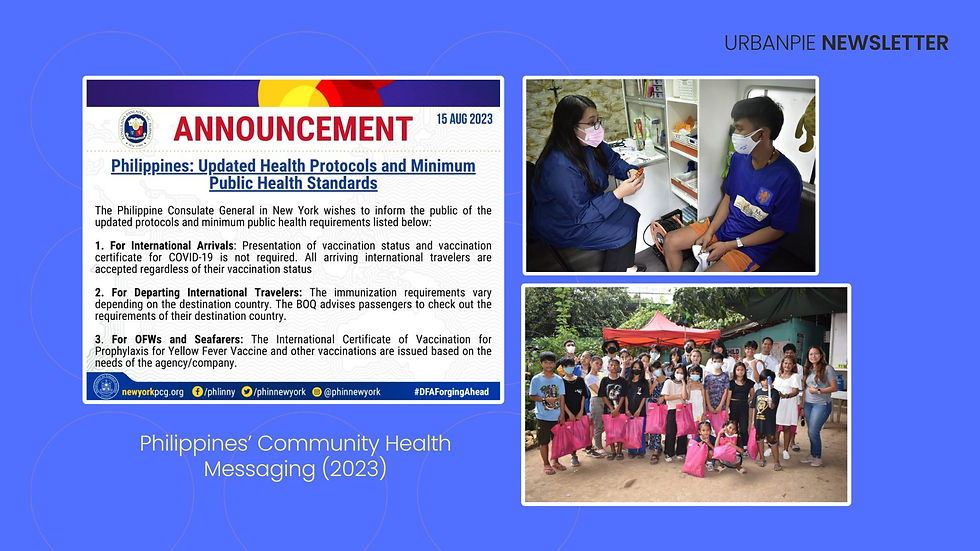How Stakeholders Can Be Part of the Story—Not Just Observers
- Innovate Urban
- Sep 16
- 3 min read
Organisations often invest heavily in content and communication, yet the voices of those closest to the issue - doctors, volunteers, and community leaders are rarely part of the design process. This gap limits authenticity and weakens trust. Effective communication today requires moving beyond top-down messaging to approaches where stakeholders are not passive observers but active co-authors.
Why Stakeholders Belong Inside the Narrative
In many initiatives, stakeholders such as doctors, volunteers, and community leaders are treated as external voices. Their names appear in reports or as quotes, but their role in shaping the communication itself remains limited. This distance weakens both relevance and reach. When stakeholders move from “observers” to “co-creators,” stories gain accuracy, resonance, and trust.
When Messages Exclude Rather Than Engage
Even well-designed programmes falter if communication is drafted without the very people it seeks to represent. Doctors may find health messages medically inaccurate, volunteers may see them disconnected from local realities, and leaders may consider them culturally unfit. The result: materials that look polished but fail to inspire action.
Lessons from the Field
Examples from recent initiatives illustrate the difference co-creation makes:
Philippines’ Community Health Messaging (2023) Local NGOs engaged doctors and barangay leaders to design vaccination posters. Instead of top-down directives, the campaign used local idioms, images of trusted community figures, and medical input from practitioners. Uptake improved, with more families attending vaccination drives.

India’s Climate Adaptation Stories (2024) In Madhya Pradesh, volunteers and panchayat leaders co-created content on water conservation. Rather than distributing technical guidelines, the programme captured stories of households already practising safe water storage. These real examples, narrated by community members, made the campaign relatable and actionable, boosting adoption of safe practices.

Trust as the Real Outcome
When stakeholders are invited to co-create content, the benefits go far beyond better wording or improved design. The process itself builds ownership. Doctors see their expertise accurately reflected, which reassures them that medical information is reliable. Volunteers recognise their lived experiences in the material, which makes them feel acknowledged rather than overlooked. Community leaders notice their cultural context and priorities represented, which validates their role as guardians of local values.
This layered sense of recognition generates trust among professionals, frontline actors, and the communities themselves. Trust, in turn, strengthens participation and makes programmes more resilient. Awareness may start the conversation, but it is trust that ensures people return, adopt, and sustain the practices being promoted.
Shaping Strategies That Invite Participation
Involve early: Bring stakeholders in during planning, not after final drafts.
Balance voices: Ensure medical, cultural, and community perspectives align.
Use shared platforms: Facilitate workshops, review sessions, and digital boards for joint inputs.
Test and adapt: Pilot content with local stakeholders before large-scale rollout.
Key Takeaways
Co-creation transforms content from institutional to relatable.
Accuracy, cultural fit, and trust improve when doctors, volunteers, and leaders shape the message.
Ownership among stakeholders leads to stronger outcomes and sustained engagement.
Moving from Representation to Partnership
True communication is not about speaking on behalf of stakeholders but creating space for them to speak with authority. By embedding co-creation in strategy, organisations design content that carries credibility, relevance, and long-term impact.
At Urban Innovation Lab, we design communication strategies where stakeholders are not peripheral voices but core authors. Connect with us to explore how your organisation can integrate co-creation into its next campaign.
FAQ
Q1. How does co-creation differ from consultation?
Consultation gathers feedback on pre-set drafts; co-creation involves stakeholders in shaping the drafts themselves.
Q2. Does this approach increase timelines?
Yes initially, but it reduces revisions and failures, saving resources in the long run.
Q3. Can co-creation work at scale?
Yes. Structured models such as focus groups, community workshops, and digital collaboration tools make it feasible.
Q4. Which stakeholders should be prioritised?
Those closest to the issue: subject experts, frontline volunteers, and local leaders who influence adoption.
Q5. How does UIL enable this?
By blending facilitation, design expertise, and sectoral knowledge to create material that is accurate, context-specific, and owned by those it represents.




Comments